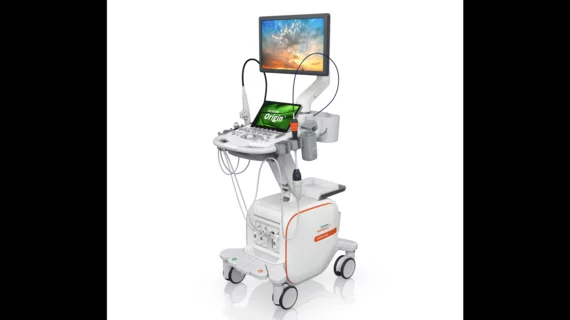Siemens Healthineers' new AI-enabled cardiovascular ultrasound system granted FDA clearance
Siemens Healthineers’ new AI-enabled cardiovascular ultrasound system has been granted clearance by the U.S. Food and Drug Administration, the company announced Tuesday.
The ACUSON Origin was developed to improve physicians’ efficiency in diagnostics, structural heart disease and electrophysiology. It comes equipped with the new AcuNav Lumos 4D ICE (intracardiac echocardiography) catheter, enabling providers to obtain precision imaging during complex procedures.
Its ergonomic design is intended to reduce the burden on users and improve efficiency and image reproducibility and consistency. It also integrates a slew of AI powered features that have been trained on more than 2 billion annotated images.
The AI applications include automated measurements, view recognition, imaging assistance and more. It is the first system to provide real-time cardiac view recognition, which automatically identifies and analyzes heart structures, positioning color and spectral Doppler regions of interest on transducer contact.
The AI Assist feature has a 99% accuracy rate for view classification and Doppler placement for 23 anatomical regions of interest. The system also provides automated contouring and quantification of all cardiac chambers and detects left-ventricular end-diastolic volume and left-ventricular end-systolic volume with 99% accuracy.
The new catheter is said to expand advanced cardiac procedure access to patients who may have previously been ineligible for such interventions due to complex contraindications, including those who may be unable to receive general anesthesia. The catheter achieves 98% multiplanar reconstruction identification and alignment accuracy.
“With its advanced AI features and potential to enhance diagnostic accuracy as well as patient care, the ACUSON Origin is positioned to reshape healthcare’s approach to cardiovascular imaging,” David Zollinger, head of Cardiovascular Ultrasound at Siemens Healthineers, said in a news release. “And the AcuNav Lumos is the latest milestone in our 24-year history with ICE. Since 1999, our ICE catheters have helped more than 2 million patients, reducing the need for anesthesia during procedures.”
Learn more about the new system here.

